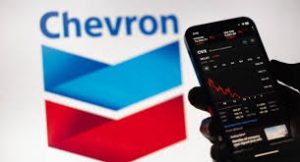Chevron Stock: Is Now the Time to Invest? Analyzing Trends and Predictions for 2025

As the energy landscape evolves, Chevron stock emerges as a focal point for investors eyeing opportunities in the oil and gas sector. With fluctuating prices, geopolitical dynamics, and an increasing push towards renewable energy sources, the decision to invest requires careful consideration of current trends and future predictions.
In this article, we’ll delve into Chevron’s performance, examine market trends shaping the company, and explore expert forecasts for 2025. Is this the right moment to invest in Chevron, or should potential investors hold off and reassess? By analyzing key indicators and expert opinions, we aim to provide you with a comprehensive understanding of whether now is the time to stake your claim in Chevron’s future. Join us as we navigate the intricacies of this energy giant and uncover strategies that could lead to smart investment decisions.
Overview of Chevron Corporation
Chevron Corporation (NYSE: CVX) is a global energy giant with a history dating back to 1879. Headquartered in San Ramon, California (recently announced to relocate to Houston, Texas), Chevron operates through two primary segments: Upstream (exploration, production, and transportation of oil and gas) and Downstream (refining, marketing, and chemical manufacturing)。 The company also invests in renewable energy, including biofuels and hydrogen, to align with global decarbonization trends. With a market cap of $241.9 billion, Chevron remains a key player in the energy sector, balancing traditional fossil fuels with emerging clean technologies.
Current Performance of Chevron Stock
As of May 2, 2025, Chevron’s stock trades at $138.50, up 1.64% from the previous close. Despite recent volatility, the stock has shown resilience, outperforming the S&P 500 in Q1 2025 with a 15.5% surge. Key metrics include a P/E ratio of 14.25 and a dividend yield of 4.77%, reflecting its appeal to income-focused investors. However, geopolitical tensions and oil price fluctuations have caused a 14.9% drop in April 2025, highlighting its sensitivity to macroeconomic factors.
Historical Trends in Chevron Stock Prices
Chevron’s stock has experienced significant volatility over the decades. In 2022, shares soared 58.48% amid post-pandemic energy demand but fell 13.62% in 2023 due to recession fears. The 2025 Q1 rebound to $168.52 was driven by strong production growth and strategic acquisitions, though prices later corrected to $138.50. Historically, Chevron’s stock correlates closely with oil prices, making it cyclical but rewarding for long-term investors during energy upswings.
Factors Influencing Chevron’s Stock Value
1. Oil Prices: Brent crude prices (currently ~$85/barrel) directly impact revenue.
2. Geopolitical Risks: Sanctions on Venezuelan exports and Middle East tensions disrupt supply chains.
3. Strategic Moves: The $53 billion Hess acquisition and Tengiz oilfield expansion aim to boost production.
4. Renewable Energy Investments: Projects in hydrogen and carbon capture align with ESG trends, attracting green investors.
5. Dividend Stability: A 38-year streak of dividend increases supports shareholder confidence.
Industry Analysis: Oil and Gas Market Trends
The global oil and gas sector faces dual pressures: rising energy demand (notably from Asia) and accelerating decarbonization. In 2024, exploration investments fell 2.5%, while AI-driven efficiency gains reduced operational costs. Chevron’s focus on Permian Basin production (up 19% in 2024) and partnerships in data center power solutions position it to capitalize on both traditional and emerging markets.
Expert Predictions for Chevron Stock in 2025
Analysts offer mixed outlooks:
Bullish View: Scotiabank projects $175.61 (+29.6% upside), citing Hess synergies and cost-cutting.
Cautious Stance: Goldman Sachs warns of overvaluation if oil prices dip below $60/barrel.
Consensus: Zacks estimates 2025 EPS at $10.34 and revenue at $197.98 billion, with modest growth.
Risks and Challenges Facing Chevron Investors
1. Oil Price Volatility: Brent crude swings could erode margins.
2. Regulatory Pressures: Stricter emissions rules may increase compliance costs.
3. Debt Concerns: A debt-to-equity ratio of 0.13 is low but requires disciplined management.
4. Hess Acquisition Delays: Arbitration disputes threaten $53 billion merger benefits.
Investment Strategies for Chevron Stock
1. Long-Term Hold: Leverage dividend stability (4.77% yield) and cyclical recovery.
2. Dollar-Cost Averaging: Mitigate volatility by buying during oil price dips.
3. Sector Diversification: Balance with renewables-focused stocks to hedge against fossil fuel risks.
4. Monitor Catalysts: Track Hess merger updates and Q2 earnings (EPS forecast: $2.49)。
Comparing Chevron with Competitors in the Industry
ExxonMobil (XOM): Higher production but lower dividend yield (3.8% vs. Chevron’s 4.77%)。
Occidental Petroleum (OXY): Attractive valuation but lacks Chevron’s global diversification.
BP and Shell: More aggressive in renewables but face geopolitical risks in Europe.
Chevron’s P/E of 14.25 trades at a premium to peers like Siemens (18.2) but justifies its growth pipeline.
Conclusion: Should You Invest in Chevron Stock Now?
Chevron offers a compelling mix of dividend reliability, strategic growth, and energy transition initiatives. However, its cyclical nature and geopolitical risks demand cautious optimism. For investors with a 5+ year horizon, Chevron’s Permian Basin dominance and renewable bets make it a Buy. Short-term traders should await clarity on oil prices and the Hess deal.